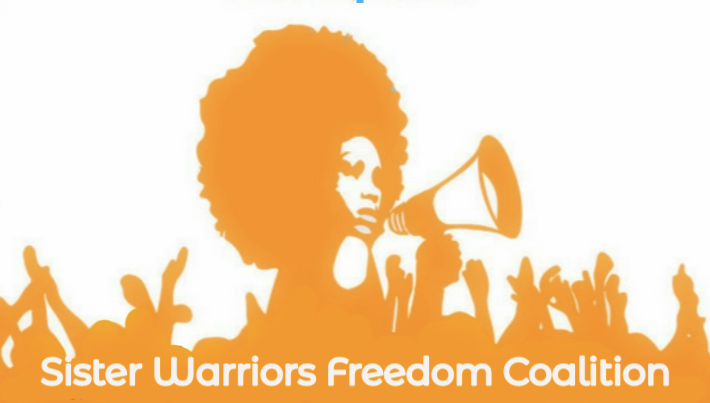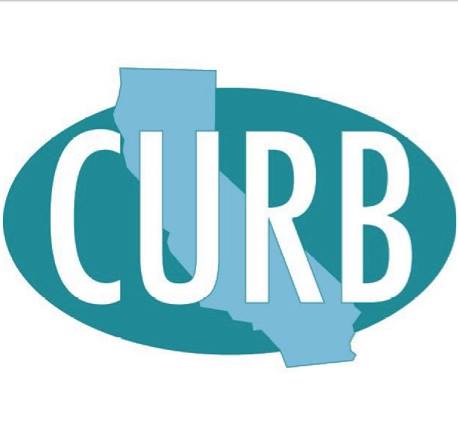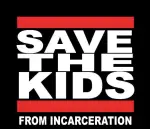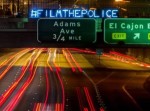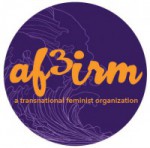CALIFORNIA CONSTITUTION
ARTICLE I DECLARATION OF RIGHTS
SEC. 2. (a) Every person may freely speak, write and publish his or her sentiments on all subjects, being responsible for the abuse of this right. A law may not restrain or abridge liberty of speech or press.
CALIFORNIA SENATE BILL 411
SB 411 clarifies individuals’ First Amendment right to record police officers by stating that a civilian recording while an officer is in a public place, or the person recording is in a place he or she has the right to be, is not violating the law. Additionally, it makes clear that recording does not constitute reasonable suspicion to detain a person or probable cause to arrest.
CALIFORNIA SHIELD LAW | SENATE BILL 558 | Ca. Evidence Code – EVID CA EVID § 1070
The reporter’s shield law contained in the California Constitution prohibits a publisher, editor, reporter, or other person connected with or employed by a newspaper, magazine, or other periodical publication, or by a press association or wire service, from being held in contempt for refusing to disclose the source of any information procured for publication while so connected or employed. The law also prohibits any of those persons from being held in contempt for refusing to disclose any unpublished information obtained or prepared in gathering, receiving, or processing information for communication to the public. https://leginfo.legislature.ca.gov/faces/billTextClient.xhtml?bill_id=201320140SB558
The Bane Act: Civil Code Section 52.1
The Bane Act provides protection from threats, intimidation, or coercion and for attempts to interfere with someone’s state or federal statutory or constitutional rights.
The rights include the right to association, assembly, due process, education, employment, equal protection, expression, formation, and enforcement of contracts, holding of public office, housing, privacy, speech, travel, use of public facilities, voting, worship, and protection from bodily restraint or harm, from personal insult, from defamation, and from injury to personal relations https://dolanlawfirm.com/employment/discrimination/the-bane-act/
CALIFORNIA PENAL CODES
CA PC 69(b) – Filming Executive Officers is not obstructing or resisting arrest
(b) The fact that a person takes a photograph or makes an audio or video recording of an executive officer, while the officer is in a public place or the person taking the photograph or making the recording is in a place he or she has the right to be, does not constitute, in and of itself, a violation of subdivision (a). https://leginfo.legislature.ca.gov/faces/codes_displaySection.xhtml?lawCode=PEN§ionNum=69
CA PC 148(g) – Filming police
(g) The fact that a person takes a photograph or makes an audio or video recording of a public officer or peace officer, while the officer is in a public place or the person taking the photograph or making the recording is in a place he or she has the right to be, does not constitute, in and of itself, a violation of subdivision (a), nor does it constitute reasonable suspicion to detain the person or probable cause to arrest the person. https://leginfo.legislature.ca.gov/faces/codes_displaySection.xhtml?sectionNum=148.&lawCode=PEN
CA PC 409.5(d) – Duly Authorized News Media Protected
(d) Nothing in this section shall prevent a duly authorized representative of any news service from entering the area closed…” After being advised of any existing danger, members of the news media are permitted free movement in the area as long as they do not hamper, deter or interfere with law enforcement or public safety functions. https://leginfo.legislature.ca.gov/faces/codes_displaySection.xhtml?sectionNum=409.5.&lawCode=PEN
CA PC 653.20(b) – Public Place Defined
(b) “Public place” means an area open to the public, or an alley, plaza, park, driveway, or parking lot, or an automobile, whether moving or not, or a building open to the general public, including one which serves food or drink, or provides entertainment, or the doorways and entrances to a building or dwelling, or the grounds enclosing a building or dwelling. https://codes.findlaw.com/ca/penal-code/pen-sect-653-20.html
CA PC 602.1(c) – Constitutionally Protected Activity Exemption From Trespassing
(c) This section shall not apply to any of the following persons: (1) Any person engaged in lawful labor union activities that are permitted to be carried out on the property by state or federal law. (2) Any person on the premises who is engaging in activities protected by the California Constitution or the United States Constitution. (d) Nothing in this section shall be deemed to supersede the application of any other law. https://codes.findlaw.com/ca/penal-code/pen-sect-602-1.html
CA PC 830.10 v2 – Any uniformed peace officer shall wear a badge, nameplate, etc.
Any uniformed peace officer shall wear a badge, nameplate, or other device which bears clearly on its face the identification number or name of the officer. https://leginfo.legislature.ca.gov/faces/codes_displaySection.xhtml?lawCode=PEN§ionNum=830.10
U.S. CIVIL CODES
18 U.S. Code § 241 – Conspiracy Against Rights
If two or more persons conspire to injure, oppress, threaten, or intimidate any person in any State, Territory, Commonwealth, Possession, or District in the free exercise or enjoyment of any right or privilege secured to him by the Constitution or laws of the United States, or because of his having so exercised the same; or
If two or more persons go in disguise on the highway, or on the premises of another, with intent to prevent or hinder his free exercise or enjoyment of any right or privilege so secured—
They shall be fined under this title or imprisoned not more than ten years, or both; and if death results from the acts committed in violation of this section or if such acts include kidnapping or an attempt to kidnap, aggravated sexual abuse or an attempt to commit aggravated sexual abuse, or an attempt to kill, they shall be fined under this title or imprisoned for any term of years or for life, or both, or may be sentenced to death. https://www.law.cornell.edu/uscode/text/18/241
42 U.S. Code § 1983 – Civil Action for Deprivation of Rights
Every person who, under color of any statute, ordinance, regulation, custom, or usage, of any State or Territory or the District of Columbia, subjects, or causes to be subjected, any citizen of the United States or other person within the jurisdiction thereof to the deprivation of any rights, privileges, or immunities secured by the Constitution and laws, shall be liable to the party injured in an action at law, suit in equity, or other proper proceeding for redress, except that in any action brought against a judicial officer for an act or omission taken in such officer’s judicial capacity, injunctive relief shall not be granted unless a declaratory decree was violated or declaratory relief was unavailable. For the purposes of this section, any Act of Congress applicable exclusively to the District of Columbia shall be considered to be a statute of the District of Columbia. https://www.law.cornell.edu/uscode/text/42/1983
42 U.S. Code § 1985. – Conspiracy to interfere with civil rights
If two or more persons in any State or Territory conspire or go in disguise on the highway or on the premises of another, for the purpose of depriving, either directly or indirectly, any person or class of persons of the equal protection of the laws, or of equal privileges and immunities under the laws; or for the purpose of preventing or hindering the constituted authorities of any State or Territory from giving or securing to all persons within such State or Territory the equal protection of the laws; or if two or more persons conspire to prevent by force, intimidation, or threat, any citizen who is lawfully entitled to vote, from giving his support or advocacy in a legal manner, toward or in favor of the election of any lawfully qualified person as an elector for President or Vice President, or as a Member of Congress of the United States; or to injure any citizen in person or property on account of such support or advocacy; in any case of conspiracy set forth in this section, if one or more persons engaged therein do, or cause to be done, any act in furtherance of the object of such conspiracy, whereby another is injured in his person or property, or deprived of having and exercising any right or privilege of a citizen of the United States, the party so injured or deprived may have an action for the recovery of damages occasioned by such injury or deprivation, against any one or more of the conspirators. https://www.law.cornell.edu/uscode/text/42/1985
42 U.S. Code § 2000aa.- Searches and seizures by government officers and employees in connection with investigation or prosecution of criminal offenses
Work product materialsNotwithstanding any other law, it shall be unlawful for a government officer or employee, in connection with the investigation or prosecution of a criminal offense, to search for or seize any work product materials possessed by a person reasonably believed to have a purpose to disseminate to the public a newspaper, book, broadcast, or other similar form of public communication, in or affecting interstate or foreign commerce https://www.law.cornell.edu/uscode/text/42/2000aa
SUPREME COURT CASE LAWS
People v. Chase C. – verbal conduct in telling the others not to cooperate was protected political speech, which did not result in any physical interference with the officer’s investigation. Chase was merely exercising his right to verbally protest and challenge law enforcement’s decision to detain his friend. No physical interference resulted. Therefore, this conduct does not rise to the level of a section 148 violation. https://caselaw.findlaw.com/ca-court-of-appeal/1721102.html
Long v. Valentino (1989) 216 Cal.App.3d 1287, 1296 – Speech is generally protected by the First Amendment, even if it is intended to interfere with the performance of an officer’s duty, provided no physical interference results.” https://caselaw.findlaw.com/ca-court-of-appeal/1761404.html
People v. Quiroga (1993) 16 Cal.App.4th 961 – The court in Quiroga held that an individual who protested repeatedly before complying with an officer’s orders could not be prosecuted under section 148 because verbal challenges to police action are protected by the First Amendment. https://caselaw.findlaw.com/ca-court-of-appeal/1760790.html
Kolender v. Lawson, 461 U.S. 352, 369 (1983) – probable cause, and nothing less, represents the point at which the interests of law enforcement justify subjecting an individual to any significant intrusion beyond that sanctioned in Terry. See also Kolender, 461 U.S. at 366-67 noting that states “cannot abridge this constitutional rule by making it a crime to refuse to answer police questions during a Terry encounter.” https://caselaw.findlaw.com/us-supreme-court/461/352.html
Cohen v. California, 403 U.S. 15 (1971) – was a United States Supreme Court case dealing with freedom of speech. The Court overturned a man’s conviction for the crime of disturbing the peace for wearing a jacket in the public corridors of a courthouse that displayed the phrase, “Fuck the Draft”. https://caselaw.findlaw.com/us-supreme-court/403/15.html
City of Houston v. Hill, 482 U.S. 451 (1987) – First Amendment protects the rights of individuals ”verbally to oppose or challenge police action” as long as their conduct does not amount to ”physical obstruction.” https://caselaw.findlaw.com/us-supreme-court/482/451.html
Duran v. City of Douglas, 904 F.2d 1372, 378 (9th Cir.’90), – police may not exercise ‘the awesome power at their disposal to punish individuals for conduct that is not merely lawful, but protected by the First Amendment.’ It held in Duran that a police officer did not have probable cause to stop an individual for the obscene gestures and words he directed from his car towards the police officer and that the officer was not entitled to qualified immunity. ‘[C]riticism of the police is not a crime.’ Id. at 1377 https://openjurist.org/904/f2d/1372/duran-v-city-of-douglas-arizona
TREZEVANT v. CITY OF TAMPA,741 F2d 336 (11th Cir. 1984) – Motorist illegally held for 23 minutes on a traffic charge was awarded $25,000 in damages. (Sets foundation for $75,OOO/hr., l,600,OOO/day) https://scholar.google.com/scholar_case?case=14121961359716279378&q=TREZEVANT+v.+CITY+OF+TAMPA&hl=en&as_sdt=2006&as_vis=1
JAMES v. KENTUCKY, 466 US 341, 80 LED 2d 346, 104 S Ct. 1830 (1984) – The supreme court held that State statutes did not take precedent over Constitutional law. https://caselaw.findlaw.com/us-supreme-court/466/341.html
MOYA v. US, 761 F2d 322 (7th Cir. 1985) – People are entitled to refuse to provide information to police. Moya went to the supreme court and back. (held to be valid) https://openjurist.org/761/f2d/322/moya-v-united-states
Brown v. Texas, 443 U.S. 47 (1979) – to detain appellant and require him to identify himself violated the Fourth Amendment because the officers lacked any reasonable suspicion to believe appellant was engaged or had engaged in criminal conduct. Accordingly, appellant may not be punished for refusing to identify himself, and the conviction is Reversed.” https://caselaw.findlaw.com/us-supreme-court/443/47.html
Turner v. Driver, No. 16-10312 (5th Cir. 2017) – Amendment right to record activities of law enforcement because it ensures cops “are not abusing their power.” https://caselaw.findlaw.com/us-5th-circuit/1791881.html
Miranda v. Arizona :: 384 U.S. 436 (1966) – “Where rights as secured by the Constitution are involved, there can be no rule making or legislation which will abrogate them.” https://supreme.justia.com/cases/federal/us/384/436/
Lefkowitz v. Turley 414 U.S. 70 (1973) – the Fifth Amendment “not only protects the individual against being involuntarily called as a witness against himself in a criminal prosecution, but also privileges him not to answer official https://caselaw.findlaw.com/us-supreme-court/414/70.html
Terry v. Ohio, 392 U.S. 1 (1968) – In the 1968 case of Terry v. Ohio, the Court held that police could “stop and frisk” a suspect on “reasonable suspicion” that he had already committed, or was about to commit, a crime. https://www.law.cornell.edu/supremecourt/text/392/1
The right of privacy may not be intruded upon by the government absent probable cause, see Dunnaway v. New York, 442 U.S. 200, 208 (1979); indeed, it is the probable cause requirement that “safeguard[s] citizens from rash and unreasonable interferences with [their] privacy.” Brinegar v. United States, 338 U.S. 160, 176 (1949). https://caselaw.findlaw.com/us-supreme-court/442/200.html
Florida v. Royer, 460 U.S. 491, 500 (1983) – “The person approached, however, need not answer any questions put to him; indeed, he may decline to listen to the questions at all and may go on his way” Id. at 497-98. https://caselaw.findlaw.com/us-supreme-court/460/491.html
Illinois v. Wardlow, 528 U.S. 119, 125 (2000) – “If they do not learn facts rising to the level of probable cause, an individual must be allowed to go on his way.” https://supreme.justia.com/cases/federal/us/528/119/
Brinegar v. United States – 338 U.S. 160 (1949) – “The citizen who has given no good cause for believing he is engaged in [criminal] activity is entitled to proceed on his way without interference” (Page 338 U. S. 177) questions put to him in any other proceeding, civil or criminal, formal or informal, where the answers might incriminate him in future criminal proceedings https://supreme.justia.com/cases/federal/us/338/160/
Pruneyard Shopping Center v. Robins, 447 U.S. 74 (1980) – decision of the Supreme Court of the State of California. The decision held that “speech and petitioning, reasonably exercised” is constitutionally protected in shopping centers under the California Constitution “even when the centers are privately owned.” The California Supreme Court decision was appealed to the Supreme Court of the United States, where the decision was upheld in June 1980 in a unanimous decision written by Chief Justice William Rehnquist
In the wake of the Pruneyard decision, it is often said that the California Constitution has a broader interpretation of free speech than does the U.S. Constitution. https://www.law.cornell.edu/supremecourt/text/447/74
SAN DIEGO POLICE DEPARTMENT POLICY
3.26 – INVESTIGATIONS
MEDIA EVIDENCE RECOVERY AND IMPOUNDING/PRESERVING PROCEDURES
- Video Recording, Audio Recording, and Photographing by Department Personnel
- General Guidelines
- Department personnel shall make use of video recording, audio recording, and photography for work-related purposes only.
- While working, Department personnel shall not take video, audio, or photographs for personal use.
- Department personnel shall not convert to their own use video, audio, or photographic evidence recovered or produced in connection with an investigation or other police activity. This includes any video, audio, or photography taken with Department equipment, personal equipment, or equipment seized from a crime scene or third party.
- Public release of video, audio, or photographs is prohibited unless approved by the Chief of Police.
- Peaceful Demonstrations
As a general policy, Department personnel should refrain from video recording or photo
graphing peaceful demonstrations. When there is reason to believe that a planned event has the potential for unlawful activity, commanding officers should make the determination whether video recording or photographing is appropriate. If, during the course of an event, information exists that unlawful activity may occur, the incident commander may use his/her discretion concerning the use of a video or still camera.
- Video and Audio Taping Traffic Stops and Citizen Contacts
When an officer uses any form of media recording of any citizen contact (i.e., traffic stop, field interview, etc.), those recordings shall be treated as evidence, regardless of whether used as evidence or for any other purpose.
- Video Recording, Audio Recording, and Photographing by Third Parties
- Recording and Photographing of Police Activity
- The general public has a First Amendment right to video record, and/or photograph Department members while they are conducting official business or while acting in an official capacity in any public space, unless such recordings interfere with police activity.
- A bystander has the same right to take photographs or make recordings as a member of the media as long as the bystander has a legal right to be present where he or she is located—public or private property; including an individual’s home or business, and common areas of public and private facilities and buildings.
- Members shall not threaten, intimidate, or otherwise discourage an individual from recording police enforcement activities or intentionally block or obstruct cameras or recording devices.
- The fact a bystander has a camera or other recording device does not, however, entitle the bystander to cross a police line, to enter an area that is closed to the public, or to enter any designated crime scene.
- A person may record public police activity unless the person engages in actions that jeopardize the safety of the officer, the suspect, or others in the vicinity, violate the law, incite others to violate the law, or interfere with police activity. Interference consists of conduct, threats, actions or activities that prevent or hinder, or purport to prevent or hinder, members from doing their job.
- A person’s recording of members’ activity from a safe distance, and absent any action that obstructs the activity or threatens the safety of the member(s), does not constitute interference. Criticism of the police or the police activity being observed also does not amount to interference.
- Members are encouraged to provide ways in which individuals can continue to exercise their First Amendment rights, as officers perform their duties.
9.19 IDENTIFICATION POLICY (Revised 01/13/09)
Whether on or off duty, officers and reserve officers shall carry or have in their immediate possession, their Department identification card, except when impractical, dangerous for their safety or when the act would hamper an investigation. The carrying of a badge or firearm shall be at the option of the officer. If an officer chooses to carry a badge, the Department identification card shall also be carried. If an officer chooses to carry a firearm, both the Department identification card and badge shall be carried.
Officers shall furnish their names and Department member identification numbers to any person requesting that information when they are on duty or while representing themselves as having official capacities, except when the withholding of such information is necessary for the performance of police duties or is authorized by the proper authority.
9.20 COURTESY POLICY (Revised 03/27/15)
Members shall be courteous to all persons. Members shall be tactful in the performance of their duties, shall control their tempers, exercise the utmost patience and discretion, and shall not engage in argumentative discussion even in the face of extreme provocation. Except when necessary to establish control during a violent or dangerous situation, no member shall use coarse, profane or violent language. Members shall not use insolent language or gestures in the performance of his or her duties. Members shall not make derogatory comments about or express any prejudice concerning race, religion, politics, national origin, gender (to include gender identity and gender expression), sexual orientation, or similar personal characteristics.
9.31 NON-BIAS BASED POLICING POLICY (Revised 3/27/15) – The department does not tolerate bias based policing. Bias based policing occurs when law enforcement inappropriately considers factors such as race, religion, national origin, gender (to include gender identity and gender expression), lifestyle, sexual orientation or similar personal characteristics in deciding with whom and how to intervene in an enforcement capacity.
Members shall not base any enforcement action, in whole or in part, on race, religion, national origin, gender (to include gender identity and gender expression), lifestyle, sexual orientation or similar personal characteristics, except when members are looking for subjects or investigating crimes involving those specific descriptors.
Members shall make every effort to prevent and report instances of discriminatory or
bias based policing practices by fellow members.
9.33 DUTY TO REPORT MISCONDUCT POLICY (04/29/14)
Members shall immediately report misconduct by another member.
For the purpose of this policy misconduct means conduct that causes risk to the health and safety of the public, or impairs the operation and efficiency of the Department or member, or brings into disrepute the reputation of the member or the Department. The conduct could involve a violation of any law, statute, ordinance, City Administrative Regulation, Department policy or procedure, act of moral turpitude or ethical violation. In this context misconduct involves a willful act done with a wrong intention and is more than mere negligence, error of judgment or innocent mistake.
If any member has credible knowledge of another member’s misconduct they shall take immediate, reasonable action to stop the misconduct, and the member shall report the misconduct to a supervisor as soon as possible.
Supervisors shall assess the validity of any allegation of misconduct by a member. If there is evidence of misconduct, or the allegation appears credible, then the supervisor shall immediately notify their chain of command and/or the watch commander’s office.
1.30 PRESS RELEASE AND MEDIA RELATIONS POLICY – Members shall provide factual, accurate and timely information to all news media on a fair and equal basis without jeopardizing the rights of crime victims or of persons accused of crime, and without compromising the security of any investigation or
breaching any confidential relationship.
DEPT. OF HOMELAND SECURITY MEMO.
Date 08/02/2010 Report Number: HQ-IB-012-2010
Photographing the Exterior of Federal Facilities
This Information Bulletin (IB) is being released to raise awareness of the public’s right to photograph the exterior of federally owned and leased facilities, Law enforcement and PSOs are advised to review the guidance provided in this 1B when encountering individuals photographing or videotaping the exterior of federal buildings and apply the guidance in the performance of their everyday duties to enhance the protection of federal facilities. It is important that law enforcement and PSOs uphold the public’s general right to photograph the exterior of federal structures while being vigilant with respect to suspicious indicators of terrorist or criminal activity.
DETAILS:
(if) Title 41, Section 102-74.420 of the Code of Federal Regulations provides federal “policy concerning
photographs for news, advertising or commercial purposes.” It states that: “Except where security regulations, rules, orders, or directives apply or a Federal court order or rule prohibits it, persons entering in or on Federal property may take photographs of—
(a) Space occupied by a tenant agency for non-commercial purposes only with the permission of the occupying agency concerned;
(b) Space occupied by a tenant agency for commercial purposes only with written permission of an authorized official of the occupying agency concerned; and
(c) Building entrances, lobbies, foyers, corridors, or auditoriums for news purposes.” https://www.photoattorney.com/wp-content/uploads/2011/02/Photographing-the-Exterior-of-Federal-Buildings.pdf
PRINTABLE .PDF Copwatchers Rights



